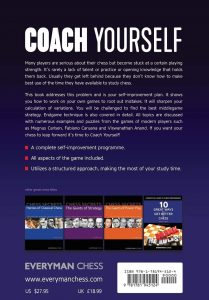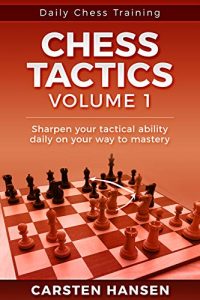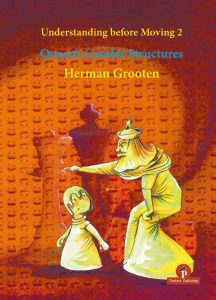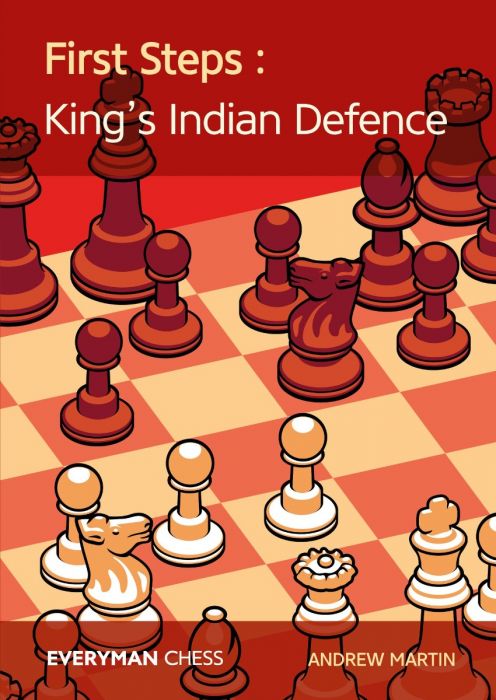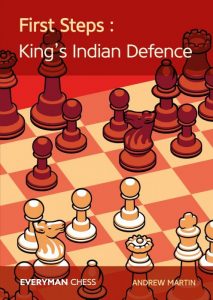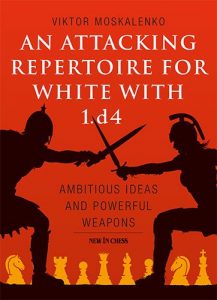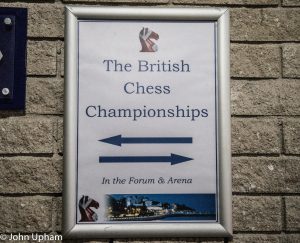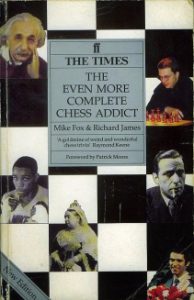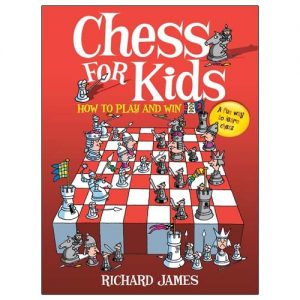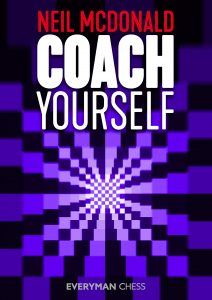
Neil McDonald is an English GM, an active player, a FIDE Trainer and a coach to the England junior teams. Neil has authored thirty-seven books for The Chess Press, Batsford and, most recently, Everyman Chess. One of his most recent works, The King’s Indian Attack : Move by Move, impressed considerably.

“Coach Yourself” is a new direction for the author whose previous titles have concentrated on specific openings and generic middlegame themes.
The Introduction reveals the book’s USP (Unique Selling Point) of enabling the reader to become their own personal coach in a wide range of sub-disciplines of the game. You might think “All chess books attempt to teach at least one aspect in detail surely?” So, does “Coach Yourself” achieve its ambitious aim ?
The author sets outs his course curriculum in thirteen precisely worded chapters as follows :
- Immunizing Yourself Against Blunders
- Training Your Tactical Imagination
- Teaching Yourself to Calculate
- Judging the Right Moment to Use a Combination
- Supercharging Your Feel for the Initiative
- Know Yourself : Diagnosing Positional Mistakes
- Learn How to Shut a Piece out of the Game
- Getting Full Value from Your King
- Wearing Down the Opponent’s Pawn Structure
- Practice Planning on a Grand Scale
- Mastering Pawn Breakthroughs in Endgames
- Understanding the Essentials of the Endgame
- Making Good Opening Choices
Of these, probably half of them at least could almost be titles for books in their own right. “Teaching Yourself to Calculate” probably could turn into a 300 page book without any problem : indeed, such titles do exist. Similarly “Making Good Opening Choices” must have appeared in chess publishing history at some point. The order in which the chapters are presented is, in itself, quite logical and correctly emphasizes perhaps the weight that students should attach to each section. For example, the subjects of these chapters do attempt to correct the balance of study away from openings and towards the more challenging and time consuming middlegame.
This review would be really rather unwieldy if we attempted to work through each chapter so we will select a couple of chapters to measure their coverage and style.
The author kicks-off logically with “Immunizing Yourself Against Blunders” suggesting that blunders tend to disappear once a serious study is started. Most of the instruction is centered around the study of example games in which common types of blunder occur. The student is invited to get into the habit of playing though the entire or part of eleven games on a board and learn the common patterns and themes that lead to oversights and blunders.
Here is an extract of an example :
Above All, Look After Your Queen!
VI. Fedoseev-A.Ledger
European Cup, Porto Carras 20181.e4 c6 2.d4 d5 3.e5 Bf5 4.Nd2 e6 5.Nb3 Nd7 6.Nf3 Ne7 7.c3 Ng6 8.Be3 Nh4 9.Nxh4 Qxh4 10.Be2 Qe4 11.h4 h6 12.h5
Here 12…Qxg2? would allow the queen to be trapped by 13.Bf3, so the best move might be 12…Qc2, forcing the exchange of queens, after which White would only have a small edge due to his space advantage. Instead, Black played the natural developing move 12…Be7?, when 13.Rc1! closed off the c2-square and left his queen suddenly trapped. The threat is 14.Nd2 Qxg2 15.Bf3, and 13…Bh7 14.Nd2 Qf5 15.g4! also does the business for White (what an ignominy for a queen to be trapped by a peasant!).
In the game Black good find nothing better than giving up the knight for two pawns with 13…Nxe5 14.dxe5 Qxe5. Fedoseev was remorseless in pressing home his advantage (one of the signs of a top player is that they don’t relax once they have gained material): 15.Qd4 Qxd4 16.cxd4 Bb4+ 17.Bd2 Bd6 18.g4 Bh7 19.Rh3 Kd7 20.Na5 Rab8 21.Rb3 Kc7Question : Can you see the most precise finish for White?
The game concluded 22.Ba6! bxa6 23.Rxc6+ Kd7 24.Rxd6! 1-0, since 24…Kxd6 25.Bf4+ (skewering the black king against the b8-rook – there’s more on this theme in Chapter Two) 25..Kd7 26.Bxb8 is too much for Black to bear.
Fedoseev’s 22nd move, laying the foundations for the combination which followed, was inspired. Don’t worry if you didn’t see it. The purpose of the next chapter is to introduce you to various tactical themes so that you can start planning your own combinations.
So the 11 examples set one up for the more challenging content to follow.
Some chapter titles particularly intrigued us : “Getting Full Value from your King” was one example plus “Learn How to Shut a Piece Out of the Game”. For each and every chapter there is a consistent method of presenting the content : Many instructional examples each containing questions that the student is challenged to answer. Some are straightforward and many are tough. They will get you thinking in every case.
All the material is presented in a friendly style almost as if you are engaged in a coaching session with the author himself and he is asking the questions and you are answering (hopefully!). The examples span games from the last hundred years including losses by the author that presumably made their mark. One of the best aspects of this book is each chapter is more or less self contained and does not depend on previous ones or what comes afterwards. Just picking out the endgame chapters only would be highly beneficial (for example) and then pick out chapters from the rest when you have the time.
We particularly enjoyed the “Getting Full Value From Your King” and “Supercharging Your Feel for the Initiative” chapters as being novel. You will, no doubt, have your own favourites.
As with every recent Everyman Chess publication high quality paper is used and the printing is clear. Each diagram is clear as is the instructional text. Figurine algebraic notation is used throughout and the diagrams are placed adjacent to the relevant text.
A couple of small gripes with the production are : the diagrams do not have a “to move” indicator. secondly, some Everyman books (but not this one) have an extra folding part to the front and rear covers. These we find protect the book from damage and also can be used as an emergency book mark !
So, does the content bear out the title? The material includes novel and challenging content covered from new angles. However, the answer to this difficult question lies with the student and to their level of motivation. Neil has given the student much hard to obtain advice combined with a Q&A format that allow the student to measure their improvement in understanding.
There is no doubt that this book presents perhaps 100 hours of instruction and opportunities to improve: sadly, we have not had 100 hours available to spend on this review!
However, we very much enjoyed this book and if you are not afraid of the challenge then you will too!
John Upham, Cove, Hampshire, 31st August, 2019

Book Details :
- Paperback : 336 pages
- Publisher: Everyman Chess (1 April 2019)
- Language: English
- ISBN-10: 1781945128
- ISBN-13: 978-1781945124
- Product Dimensions: 17.2 x 1.7 x 24.1 cm
Official web site of Everyman Chess
